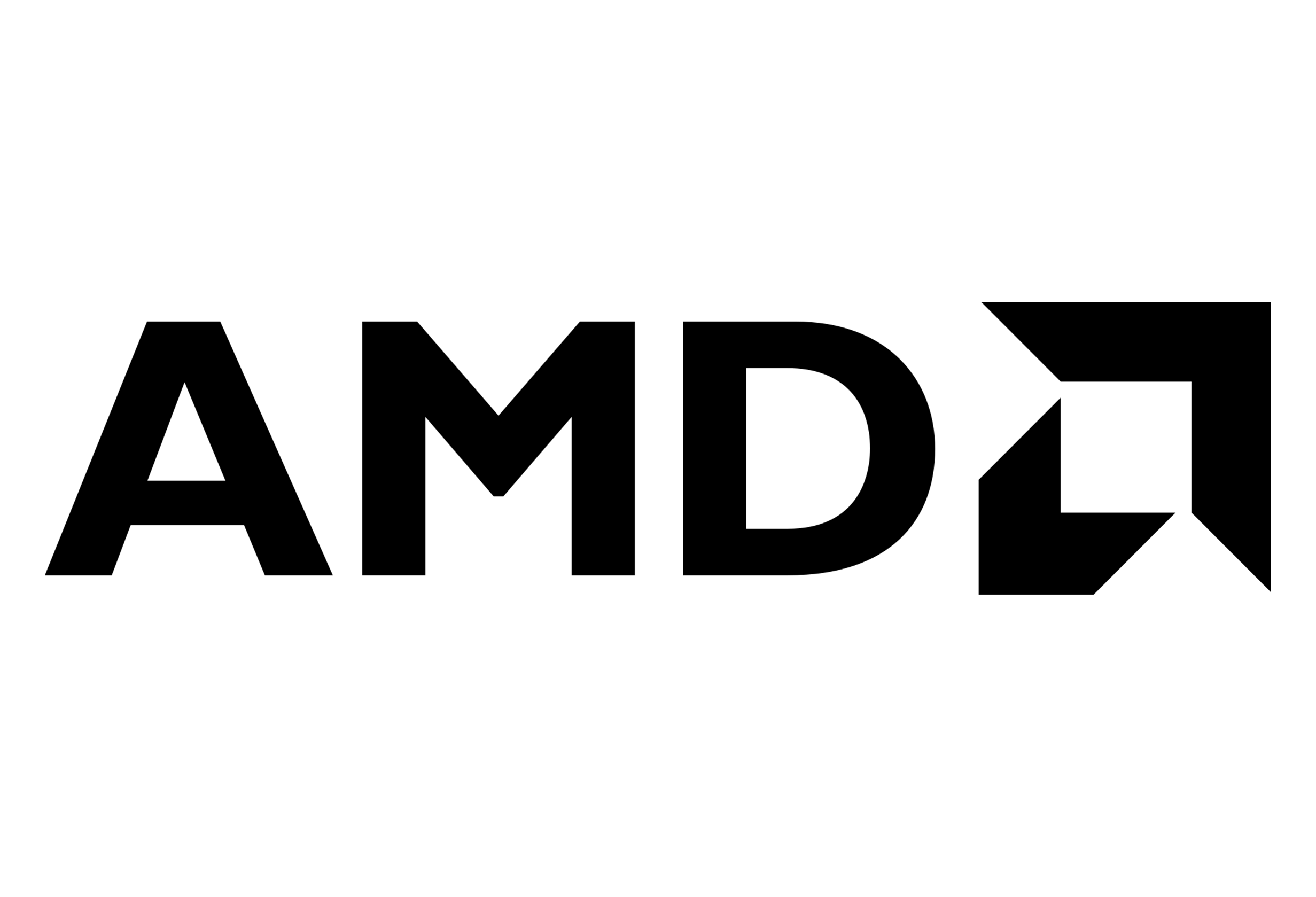— แสดงความเป็นผู้นำด้านการประมวลผลประสิทธิภาพสูง โซลูชั่นที่สร้างการเปลี่ยนแปลง และการทำงานที่ยั่งยืนเพื่อขับเคลื่อนการเติบโตอย่างมีนัยสำคัญมูลค่า 79,000 ล้านเหรียญสหรัฐฯ ของตลาดดาต้าเซ็นเตอร์ คอมพิวเตอร์ และเกม[1] —
กรุงเทพฯ, ประเทศไทย – 9 มีนาคม 2563 – ณ งาน Financial Analyst Day AMD (NASDAQ: AMD) เปิดเผยรายละเอียดการเติบโตในอนาคตผ่านทางแผนดำเนินธุรกิจ ด้วยการ ผลักดันโปรเซสเซอร์ และกราฟิกการ์ด ประสิทธิภาพสูงรุ่นต่างๆ และการลงทุนด้านเทคโนโลยี อย่างมหาศาล ที่ได้รับการออกแบบมาเพื่อส่งมอบความเป็นผู้นำด้านผลิตภัณฑ์ และโซลูชั่นที่เข้ามาทดแทนการทำงานในปัจจุบัน
ดร. ลิซ่า ซู ประธานและซีอีโอ ของ AMD กล่าวว่า “แผนการดำเนินธุรกิจผลิตภัณฑ์การประมวลผล และกราฟิกการ์ดของเรา ออกแบบมาเพื่อเร่งให้รายได้ของเราเติบโตอย่างมีนัยสำคัญ และสร้างผลตอบแทนที่แข็งแกร่งให้กับผู้ถือหุ้น โดยเราโฟกัสที่การดำเนินงานเพื่อความเป็นผู้นำอย่างต่อเนื่องผ่านแผนดำเนินธุรกิจด้านทรัพย์สินทางปัญญา (IP Roadmap) และนำเสนอเทคโนโลยีขั้นสูง เพื่อผลักดันส่วนแบ่งการตลาดให้เติบโตอย่างยั่งยืนต่อเนื่อง ทั้งในตลาดคอมพิวเตอร์ประสิทธิภาพสูง ตลาดคอมพิวเตอร์สำหรับผู้เล่นเกม และดาต้าเซ็นเตอร์ที่มีขนาดใหญ่”
อัพเดตเทคโนโลยีของ AMD
จากการส่งมอบโปรเซสเซอร์ AMD Ryzen™ และ AMD EPYC™ มากกว่า 260 ล้านชิ้นทั่วโลก AMD มีแผนที่จะสร้างความสำเร็จผ่านทางโปรเซสเซอร์ยุคต่อไป ด้วยการรวบรวมซีพียูและนวัตกรรมที่เชื่อมโยงถึงกันและกัน ดังนี้:
- AMD วางแผนเปิดตัวโปรเซสเซอร์รุ่นแรกที่จะใช้สถาปัตยกรรมรุ่นต่อไปคือ “Zen 3” ในช่วงปลายปี 2563 ในขณะที่กำลังออกแบบสถาปัตยกรรม “Zen 4” และมีเป้าหมาย ที่จะใช้เทคโนโลยีการผลิตขั้นสูงขนาด 5nm
- AMD เปิดเผยแผนที่จะพัฒนาความเป็นผู้นำด้วยเทคโนโลยี “chiplet” และ “die-stacking” ซึ่งรวมถึงเทคโนโลยีการแพ็คเกจซีพียูแบบ “X3D” ใหม่ที่ประกอบด้วยเทคโนโลยี “chiplet” และ “hybrid 2.5D” และ “3D die-stacking” ทำให้สามารถเพิ่มความหนาแน่นของแบนด์วิดท์ได้มากกว่าเดิมถึง 10 เท่า
- AMD ประกาศเปิดตัวสถาปัตยกรรมรุ่นที่ 3 ชื่อ AMD Infinity Architecture มาพร้อมหน่วยความจำของโปรเซสเซอร์ และกราฟิกการ์ดที่เชื่อมโยงกันอย่างเหมาะสม ช่วยเพิ่มประสิทธิภาพอย่างมีนัยสำคัญ และลดความซับซ้อนการจัดการซอฟต์แวร์ที่จำเป็นสำหรับโซลูชั่นการประมวลผลที่รวดเร็ว ด้วยการแบ่งการใช้หน่วยความจำของ โปรเซสเซอร์ และกราฟิกการ์ดตัวเดียวกันอย่างลงตัวและมีความต่อเนื่อง
- AMD กำลังสร้างกลุ่มผลิตภัณฑ์ด้านความปลอดภัยที่ยอดเยี่ยม พร้อมด้วยฟีเจอร์เพิ่มเติมต่างๆ โดย AMD ประกาศเข้าร่วมองค์กร Confidential Computing Consortium ที่เกิดจากการรวมกลุ่มกันของบริษัทชั้นนำทางด้านฮาร์ดแวร์ และซอฟต์แวร์ต่างๆ ทำงานร่วมกัน เพื่อปิดช่องว่างในการรักษาข้อมูลของแต่ละองค์กร
เมื่อกล่าวถึงมูลค่าที่กำลังเติบโต และความหลากหลายของเวิร์คโหลดกราฟิกการ์ด AMD ประกาศแผนดำเนินธุรกิจในผลิตภัณฑ์หลายๆ รุ่นเพื่อส่งมอบสถาปัตยกรรมกราฟิกการ์ด 2 รุ่น ที่ได้รับการพัฒนาให้เหมาะสมที่สุดสำหรับตลาดเกม และดาต้าเซ็นเตอร์:
- สถาปัตยกรรม AMD Radeon™ DNA (AMD RDNA) ออกแบบมาสำหรับการเล่นเกม มาพร้อมด้วยกราฟิกการ์ดที่ได้รับรางวัลคือ AMD Radeon™ RX 5000 series ทั้งนี้สถาปัตยกรรม AMD RDNA 2 รุ่นต่อไป ออกแบบมาให้ส่งมอบประสิทธิภาพ ในการทำงานต่อการใช้พลังงาน (Performance-per-watt) เพิ่มขึ้นถึง 50% เมื่อนำไปเทียบกับสถาปัตยกรรม AMD RDNA รุ่นแรก รองรับเทคโนโลยี Ray-Tracing, Variable Rate Shading (VRS) และฟีเจอร์ขั้นสูงต่างๆ โดยคาดการณ์ว่าสถาปัตยกรรม AMD RDNA รุ่นที่ 2 จะเปิดตัวในช่วงปลายปี 2563
- AMD เปิดตัวสถาปัตยกรรมใหม่ AMD Compute DNA (AMD CDNA) ออกแบบมาเพื่อเพิ่มประสิทธิภาพในการประมวลผลเวิร์คโหลดงานด้านดาต้าเซ็นเตอร์ สถาปัตยกรรม AMD CDNA รุ่นแรก มีแผนจะเปิดตัวในช่วงปลายปีนี้ รวมไปถึง สถาปัตยกรรม AMD Infinity Architecture รุ่นที่ 2 ที่จะเข้ามายกระดับการเชื่อมต่อระหว่างกราฟิกการ์ด ต่อกราฟิกการ์ด (GPU to GPU) และเหมาะสำหรับแอพลิเคชั่นแมชชีนเลิร์นนิ่ง (Machine Learning) และการประมวลผลประสิทธิภาพสูง สถาปัตยกรรม AMD CDNA รุ่น 2 จะรองรับสถาปัตยกรรม AMD Infinity Architecture รุ่นที่ 3 เพื่อยกระดับประสิทธิภาพการทำงานของซูเปอร์คอมพิวเตอร์ระดับ Exascale รุ่นต่อไป
- การขยายแพลตฟอร์มซอฟต์แวร์โอเพนซอร์ส ROCm รุ่นก่อนหน้า สำหรับดาต้า เซ็นเตอร์ AMD วางแผนเปิดตัว ROCm 4.0 ในช่วงปลายปีนี้ ในรูปซอฟต์แวร์โซลูชั่น แบบครบวงจรสำหรับการประมวลผล Exascale Systems ประสิทธิภาพสูง และเวิร์คโหลดงานด้านแมชชีนเลิร์นนิ่ง
AMD ในตลาดดาต้าเซ็นเตอร์
นับตั้งแต่ปี พ.ศ. 2560 AMD ได้ส่งมอบนวัตกรรมที่ยอดเยี่ยมออกสู่ตลาด ดาต้าเซ็นเตอร์อย่างมีนัยสำคัญ AMD มีแผนดำเนินธุรกิจเชิงรุกเพื่อการเป็นผู้นำ ในด้านผลิตภัณฑ์ ด้วยการสร้างเซิร์ฟเวอร์โปรเซสเซอร์ AMD EPYC รุ่นแรก และรุ่นที่สอง รวมไปถึงรายละเอียดแผนการขับเคลื่อนนวัตกรรมอย่างต่อเนื่องในตลาดดาต้าเซ็นเตอร์ที่กำลัง เติบโต ดังนี้:
- AMD กำลังขับเคลื่อนอนาคตเทคโนโลยีการประมวลผลระดับ Exascale ด้วยผลิตภัณฑ์โปรเซสเซอร์ กราฟิกการ์ด เทคโนโลยีการเชื่อมต่อ และซอฟต์แวร์ รวมไปถึงซูเปอร์คอมพิวเตอร์ El Capitan ที่ตั้งอยู่ที่ศูนย์วิจัยแห่งชาติ Lawrence Livermore National Laboratory ที่มีการประกาศไปเมื่อเร็วๆ นี้ คาดว่าจะเปิดตัวในปี พ.ศ. 2566 และคาดว่าจะส่งมอบประสิทธิภาพการประมวลผลแบบ Double-Precision มากกว่า 2 exaFLOPS ซึ่งจะทำให้มีประสิทธิภาพมากกว่าซูเปอร์คอมพิวเตอร์ที่เร็วที่สุด 200 อันดับแรกในปัจจุบัน
- AMD ยังคงได้รับการตอบรับอย่างดีจากโปรเซสเซอร์ AMD EPYC™ รุ่นที่ 2 สำหรับตลาดองค์กร ผู้ใช้คลาวด์ และ HPC ด้วยความเป็นผู้นำด้านประสิทธิภาพ และความได้เปรียบด้านต้นทุนภาพรวม (TCO) ซึ่งเป็นสิ่งที่สำคัญที่สุดสำหรับองค์กร และเวิร์คโหลดด้านคลาวด์ โดยในปี 2563 เราคาดว่าจะมีจำนวนโปรเซสเซอร์ AMD EPYC มากกว่า 150 ตัว และแพลตฟอร์มเซิร์ฟเวอร์อีก 140 ตัว ที่จะพร้อมวางจำหน่าย
- AMD กำลังปลดล็อคประสิทธิภาพในการประมวลผลด้วยเทคโนโลยีใหม่ๆ รวมถึง สถาปัตยกรรม AMD CDNA, สถาปัตยกรรม AMD Infinity Architecture รุ่นที่ 3 และแพลตฟอร์มซอฟต์แวร์ ROCm 4.0 ซึ่งทั้งหมดทั้งมวลนี้จะรองรับการทำงานของซูเปอร์คอมพิวเตอร์ Frontier และ El Capitan
AMD ในตลาดการประมวลผล และกราฟิก
AMD อยู่ในตำแหน่งที่ได้รับการยอมรับอย่างดีที่ผลักดันการเติบโตอย่างยั่งยืน ของตลาดคอมพิวเตอร์ และตลาดเกมด้วยโปรเซสเซอร์ AMD Ryzen™ กราฟิกการ์ด AMD Radeon™ และผลิตภัณฑ์กลุ่ม Semi-Custom โดยตั้งแต่ปีพ.ศ. 2560 AMD สามารถเพิ่มการจัดส่งผลิตภัณฑ์ และส่วนแบ่งการตลาดเพิ่มขึ้นเกือบ 2 เท่า จากผลิตภัณฑ์กลุ่ม คอมพิวเตอร์เดสก์ท็อป, HEDT (High-end Desktop) และโปรเซสเซอร์โน๊ตบุ้ค ในส่วน ของตลาดเกมนั้น AMD ได้ร่วมงานกับแบรนด์ต่างๆ ในระดับโลก เพื่อส่งมอบกราฟิกการ์ด AMD Radeon ให้กับเกมเมอร์มากกว่า 500 ล้านคนผ่านทางผลิตภัณฑ์ต่างๆ ที่เป็นที่ยอมรับมากที่สุด เพื่อตอบสนองความต้องการของเกมเมอร์ทั่วโลกกว่า 2.5 พันล้านคน ด้วยการร่วมมือกับ Microsoft และ Sony ทำให้ AMD สามารถสร้างสัมพันธภาพระยะยาวเพื่อรักษาการเป็นผู้นำตลาดอย่างต่อเนื่องในฐานะผู้ให้บริการซิลิคอนอันดับหนึ่งในตลาดเกมคอนโซล
โดยในปีพ.ศ. 2563 และในอนาคต AMD มองเห็นโอกาสสำคัญในการผลักดัน การเติบโตอย่างต่อเนื่องในผลิตภัณฑ์ด้านการประมวลผล และกราฟิก ดังนี้:
- AMD จะยกระดับความเป็นผู้นำด้านประสิทธิภาพด้วยผลิตภัณฑ์โปรเซสเซอร์ AMD Ryzen™ รุ่นที่ 3 บนกระบวนการผลิต 7nm สถาปัตยกรรม “Zen 2” ออกแบบมาเพื่อคอมพิวเตอร์เดสก์ท็อป และโน๊ตบุ้ค สำหรับตลาดกลุ่มผู้บริโภคทั่วไป และตลาดองค์กร รังสรรค์มาเพื่อเพิ่มประสบการณ์การใช้งานให้กับผู้ใช้ โปรเซสเซอร์ AMD Ryzen รุ่นใหม่ล่าสุดจะส่งมอบประสิทธิภาพ การตอบสนอง อายุการใช้งาน แบตเตอรี่ และฟีเจอร์ด้านความปลอดภัย เพื่อรองรับความต้องการเวิร์กโหลดที่มากที่สุด AMD วางแผนที่จะเพิ่มประสิทธิภาพให้กับตลาดเกม ผู้สร้างคอนเทนต์ และการผลิต ผ่านผลิตภัณฑ์โปรเซสเซอร์ AMD Ryzen ที่ใช้สถาปัตกรรมการผลิต “Zen 3” เป็นครั้งแรก ที่กำลังจะเปิดตัวในปี 2563
- AMD วางแผนที่จะส่งมอบผลิตภัณฑ์กราฟิกการ์ดประสิทธิภาพสูง ที่ขับเคลื่อน ประสิทธิภาพด้วยสถาปัยกรรม AMD RDNA เพื่อขยายฐานผู้ใช้ผลิตภัณฑ์กราฟิกการ์ด AMD Radeon ด้วยประสิทธิภาพที่ยอดเยี่ยมของกราฟิกการ์ดซีรีย์ AMD Radeon RX 5000, กราฟิกการ์ด “Navi 2X” ที่ใช้สถาปัตยกรรมการผลิต AMD RDNA นำเสนอ การเล่นเกมในระดับ 4K ที่ยอดเยี่ยม ฟีเจอร์ใหม่ๆ รวมไปถึงการรองรับเทคโนโลยี Ray-Tracing และยกระดับประสิทธิภาพอย่างเห็นได้ชัด
คำชี้แจงเกี่ยวกับโรคระบาด COVID-19 จาก AMD
เหตุการณ์โรคระบาด COVID-19 ที่ยังคงส่งผลกระทบอย่างต่อเนื่อง เราให้ความสำคัญ สูงสุดในด้านสุขภาพและความเป็นอยู่ที่ดีของพนักงาน AMD, ลูกค้า, คู่ค้า และเหล่าสมาชิก ในชุมชนต่างๆ AMD ขอขอบคุณอย่างยิ่งในความมุ่งมั่นของบุคคล และองค์กรต่างๆ ที่ทุ่มเททำงานกันอย่างไม่รู้จักเหน็ดเหนื่อย เพื่อแก้ไขปัญหาด้านสุขภาพของประชาชนทั่วโลก
AMD ได้ตอกย้ำด้วยการวิเคราะห์ด้านการเงินในไตรมาสแรกของปี 2563 ณ งาน 2020 Financial Analyst Day โดย AMD คาดว่าผลกระทบจากโรคระบาด COVID-19 ในช่วงแรกจะยังไม่ส่งผลกระทบมากนัก อาจส่งผลให้รายได้ลดลง คาดการณ์อยู่ที่ประมาณ 1.8 พันล้านดอลลาร์สหรัฐฯ บวกลบไม่เกิน 50 ล้านดอลลาร์สหรัฐฯ ดังนั้นการวิเคราะห์ด้านการเงิน AMD ของทั้งปี 2563 ยังคงไม่เปลี่ยนแปลงมากนัก
Supporting Resources
- Watch the replay of the event and view executive presentations here
- Follow AMD News on Twitter to stay up to date
[1] $79B TAM based on AMD internal estimates, March 2020.
